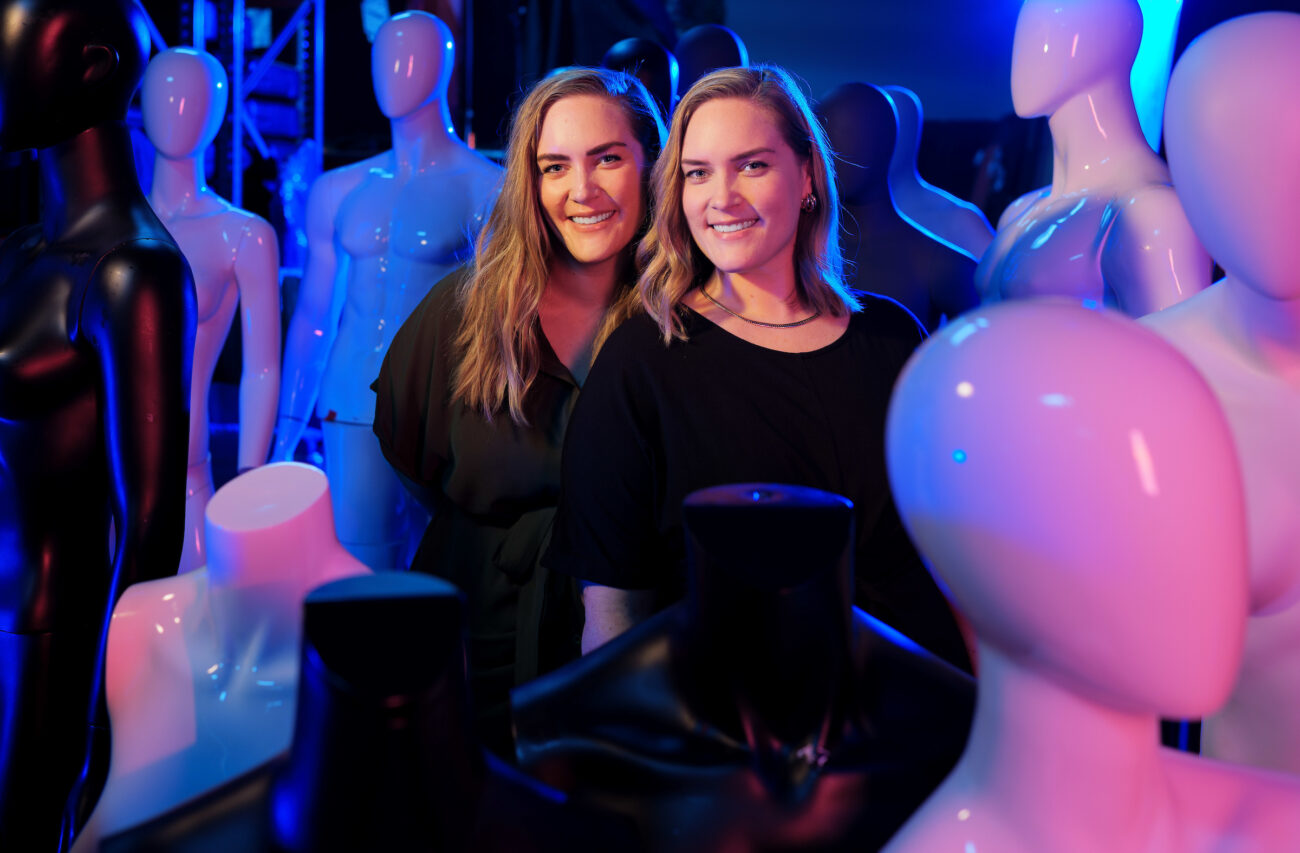Rebuilding Rural
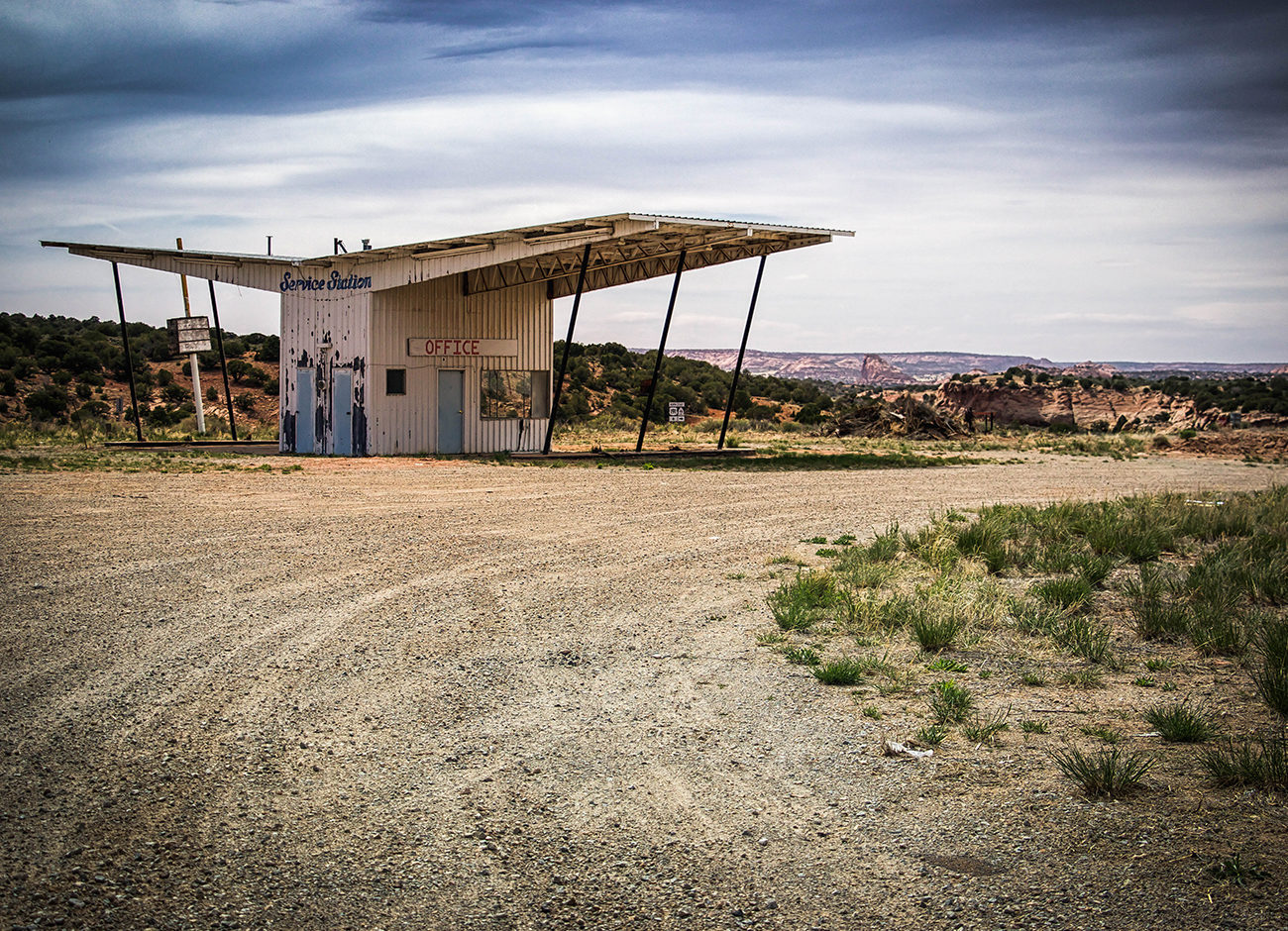
Don Albrecht grew up baling hay and milking cows by hand on a 40-acre farm in Wayne County, Utah. He and his five siblings were brought up in Fremont, a pin-prick town on the Colorado Plateau located 7,000 feet above sea level in one of the driest regions of the state. The growing season is short. Life there has never been exactly easy.
“We were raised by a darn, you-guys-are-going-to-college mother,” Don says. “She had a brilliant mind. She saw the future.”
Two of her sons earned doctorate degrees and took up the mantle of developing opportunities for rural communities in different ways—Stan through expanding Utah’s regional campus system while president of Utah State University, and Don, through programming at the Western Rural Development Center (WRDC), which he directs.
The WRDC is where researchers across the American West study issues affecting rural communities and strategies for overcoming them. The problems plaguing rural America are vast: higher than average unemployment and poverty rates, housing shortages, and poorer health outcomes than their urban peers. For Albrecht, “virtually everything goes back to the economy,” he says.
For decades, jobs in resource extraction, manufacturing, and agricultural sectors—often the backbone of rural economies—have dried up. The number of manufacturing jobs in the United States peaked in 1979. The number of coal mining jobs has steadily fallen since 1923. And farm labor hours have dwindled nearly tenfold since 1930—yet, farm production has more than doubled.
In his forthcoming book Building a 21st Century Economy for Rural America, Albrecht argues that most of these jobs weren’t lost to policy changes, but to automation and technological advancement. We can produce more goods and profit now with less people.
“The U.S. and other nations around the world are transitioning from industrial economies to information and service-based economies,” he writes. “Job skills in the goods producing industries that once provided a solid livelihood are becoming obsolete. While machines occasionally break, they don’t get sick, tired, distracted, fail to show up for work, ask for a pay raise, or quit and go to work for the competitor.”
Here in Cache Valley, we don’t milk cows by hand anymore like when I grew up, Albrecht says from his office at the WRDC. The system has been mechanized. Machines increasingly replace manpower in mines, too, he says. “Those jobs aren’t coming back.”
“The U.S. and other nations around the world are transitioning from industrial economies to information and service-based economies,” he writes. “Job skills in the goods producing industries that once provided a solid livelihood are becoming obsolete. While machines occasionally break, they don’t get sick, tired, distracted, fail to show up for work, ask for a pay raise, or quit and go to work for the competitor.”
Albrecht argues rather than pine for the past, communities need to prepare for the new rural economy—one that capitalizes on communication technologies, a remote workforce, and the unique amenities rural communities can provide.
“To me, the hope for rural America is we have to recognize what is happening and embrace it,” he says. “The solution is to help people understand where they are and move forward.”
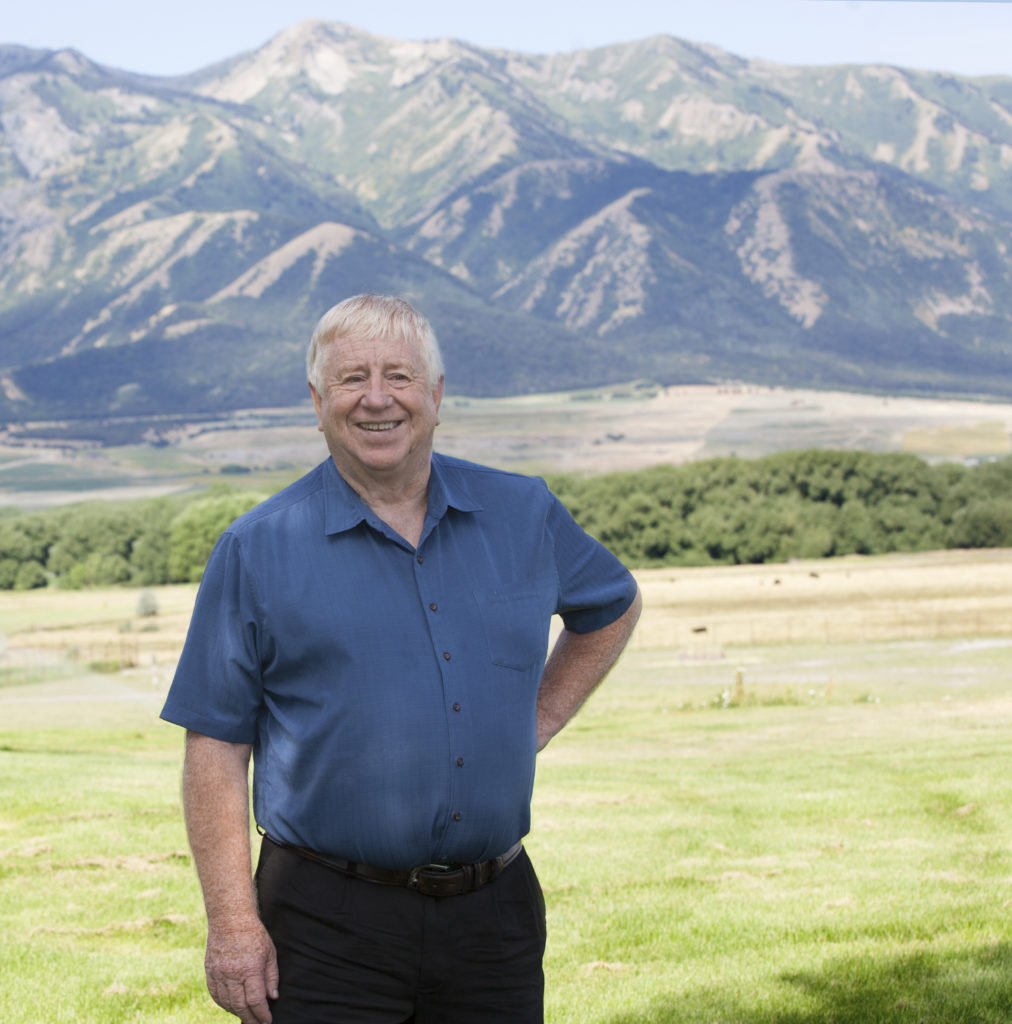
Don Albrecht directs the Western Rural Development Center at Utah State University.
Albrecht ’76, MS ’78 expects the next wave of job losses will arrive in the next decade as retail and trucking jobs disappear across the landscape. Every online purchase is another nail in the coffin for traditional retail outlets. Self-driving trucks have already hauled refrigerators along the I-10 freeway between El Paso and Palm Springs. For Albrecht, looking back means losing ground. He tells the story—both in person and in his book—of a county commissioner who asked Albrecht for help reopening eight sawmills.“What everyone associated with rural America needs to understand is that those eight sawmills are not coming back,” he writes. “The most important reason they are not coming back is that one modern sawmill using advanced technology can turn more logs into wood products with fewer workers than all nine sawmills could have done in 1962. The eight missing sawmills are not coming back and neither is the stagecoach, the Pony Express or the slide rule.”
Technological advancements also mean workforce requirements are changing.
A growing proportion of individuals hired in the manufacturing sector have bachelor’s degrees or higher. The jobs of the future will require specialized skills and knowledge, Albrecht says.
“Not everyone is going to get a college degree, but everyone needs some training or skills beyond a high school degree—that just isn’t going to cut it.”
In some ways, Albrecht is an ideal messenger to deliver the news. He grew up in rural America. He loves rural America. That’s why he has devoted his life to studying it. Albrecht earned his Ph.D in rural sociology at Iowa State University and spent 27 years teaching at Texas A&M University before taking the helm of the WRDC in 2008. Location no longer matters as much as it did in the past, Albrecht says. Western settlements connected first by roads, then by mass media, are now increasingly linked to the global marketplace with broad-band. This bodes well for communities in the new information and service economy.
“It used to be if you wanted to set up a shop you had to be where the people are—you don’t have to anymore,” he says. “You can live where you want. For lots of jobs you don’t have to be in the office every day.”
‘Economies change’
A key component of a thriving economy is diversification, says Linda Gillmor, ’07, and MS ’11, director of the Office of Rural Development at the Governor’s Office of Economic Development.
“Lack of diversity is a common factor in counties that are struggling,” she says. “Economies change. Our economy is changing rapidly as industries become more automated and digital, but there is also opportunity.”
During his 2016 State of the State address, Governor Herbert singled out rural Utah, stating that all 29 counties should experience robust economic growth—not just those along the Wasatch Front.
“Lack of diversity is a common factor in counties that are struggling,” she says. “Economies change. Our economy is changing rapidly as industries become more automated and digital, but there is also opportunity.”
“A high quality of life should mean parents don’t have to watch their children leave to go to another town or another state because there are no jobs available where they live,” he said. A year later he launched a 25,000 jobs initiative, challenging rural counties to create individual strategic economic development plans. “It’s a bottom-up approach,” Gillmor says.
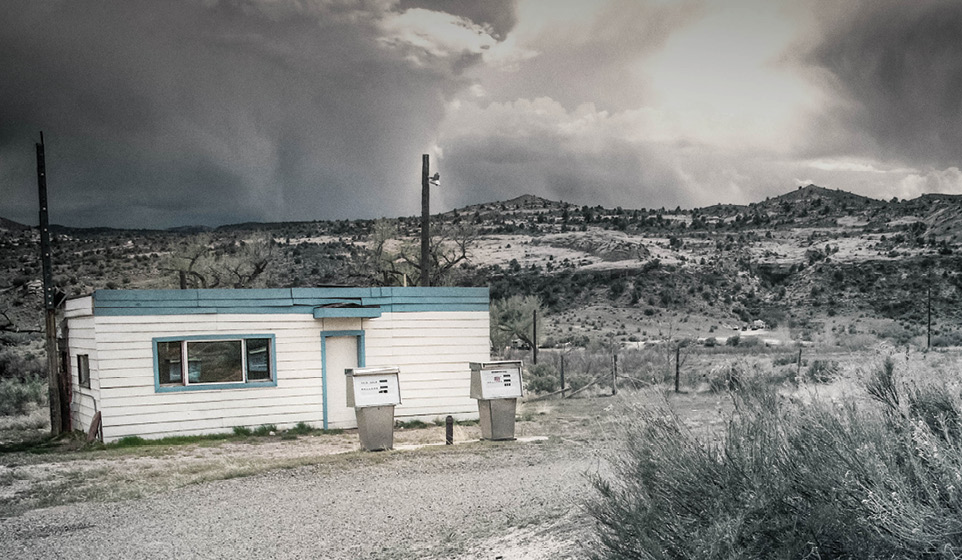
State Route 128 by the Old Dewey Bridge, North of Moab. Photo by John DeVilbiss.
“All rural is not alike,” she says, adding that each community faces slightly different obstacles and pathways forward. “We want all counties to experience economic growth and we want them to lead out on what that growth will look like.”
Utah offers tax credits to small businesses in designated enterprise zones looking to hire or make capital improvements, but additional efforts recently passed by the state legislature are designed to boost employment in rural regions. In 2018, the legislature created Rural Economic Development Incentive (REDI) grants for businesses creating full-time jobs that pay at least 125 percent above the average county wage, and also funded a pilot project called the Rural Online Initiative administered by USU Extension to train individuals how to benefit from online business and job opportunities.
One of the biggest challenges Gillmor hears from rural commissioners is that they are losing their children to jobs outside the county. Remote working opportunities could stem some the of the loss by creating jobs at home, she says. “It allows people to stay.”
Part of the state’s effort to spur economic growth in rural Utah involved helping counties fund an area sector analysis process (ASAP) to create sustain-able economic development goals. The WRDC administers ASAP throughout the West and helps local stakeholders to identify the ideal sectors for growth in their region. The ASAP process involves inventorying a community’s existing assets such as its transportation infrastructure, workforce characteristics, and presence of high-speed internet, and plugging that data into an algorithm that merges results from business and community preference surveys.
The ASAP is an approach to help communities consider where they are, what they aren’t, and ways to rebuild their economies, Albrecht says. “There are benefits beyond simply the output the model projects, because the community’s outlook on the world changes.”
Change?
Russ Cowley ’80 grew up in Sevier County when agriculture was king and the mining culture was just starting to get its feet underneath, he says. He always imagined becoming a farmer or a rancher to continue his family’s legacy. While attending Utah State Cowley saw how agriculture was shifting.
“You needed to be bigger,” he says. “We went from buyers coming and sitting on the fence to offer a price to a futures market where you sit at a computer screen. I started watching a lot of changes.”
He thought it best to get out in front of them. In his role as executive director of the Six County Association of Governments, he assembles a comprehensive economic development strategy for the region every five years.
“You have to have planned economic development if you’re going to see your community grow and have the infra-structure and services you need,” he says. “Without economic growth, and just relying on your housing tax base—that’s not going to happen. I heard someone once say ‘If you’re community isn’t growing it’s dying.’ I would say that’s true.”
Cowley watched the ASAP process unfold in Wayne County and felt it would be a helpful exercise for his region. After nearly 30 years serving in an development capacity, Cowley points to the public relations side of bringing in a new business as one of the trickiest parts of the job. When it comes to economic developers in rural communities we look at everything, we aren’t opposed to anything, but we aren’t certain whether or not the community will support efforts, he says. One benefit of doing the ASAP process is that it requires local citizen engagement.
“You have to have planned economic development if you’re going to see your community grow and have the infrastructure and services you need,” he says. “Without economic growth, and just relying on your housing tax base—that’s not going to happen. I heard someone once say ‘If you’re community isn’t growing it’s dying.’ I would say that’s true.”
“When I look back at this, helping them to think a little outside the box—I think that was worth every bit of the process we went through,” Cowley says. “The surveys were designed to make people think [abstractly].”
Residents are asked to consider: Is it important that an industry returns profits to the community? That they hire local? But the idea of growth can be unsettling, too.

Changes are happening in Helper, Utah, where the town is undergoing an economic revival that includes this replica gas station.
“Some people absolutely don’t want change,” he says. “When I go to Salt Lake City, it’s huge—gigantic compared to where we live. You get into these rural communities we live in, we haven’t had that tremendous growth and the majority of people don’t want to see that happen. People don’t want to see that change come to us.”
That is, unless it comes in the form of more small manufacturing or mom-and- pop style businesses, he says. “We are almost too specific in what would like to see come here.” The effort to build an inland port in Salt Lake would be a challenge to rustle up two votes of support here, Cowley says. “Maybe a business opening doesn’t mean so much there … Here, it does.”
Finding a match
At 7 a.m. one June morning, stake-holders from Carbon and Emery counties order breakfast and look at slides project-ed overhead. Maleika Landis, a member of the WRDC’s ASAP team from the University of Nevada, Reno breaks down highlights of the region’s report.
“It’s sort of Match.com for communities and industries,” she says. “You may find that first attraction, but when you start talking you may find your values don’t really align. You ask, ‘Is this sustainable?’”
The ASAP process is designed to help communities find new sources of business and retain current industries based on town and industry preferences. Landis points to one line on a chart marked with a row of green circles indicating positive matches. It represents access to higher education as important to sectors identified as top matches by the model—and USU Price has that box covered.
“Your assets were pretty robust for a rural community,” she says.
The area benefits from low housing costs, and as rent soars in some urban areas of the country, people may start looking to rural communities for relief. One caveat is that communities also need to have quality of life indicators to capture that population such as movie theaters, she says. Among some of the top industry matches include pipeline transportation of crude oil, telecommunications, and semiconductor manufacturing. Landis suggests not taking any options off the table yet, even lower ranked businesses, until stakeholders ask participants “why” to determine if more overlap exists than the initial output suggests.
“I think a lot of people would move back if there were more opportunities. It gives me more drive to create that.”
Jordan Leonard, the economic development director for Emery County, picks up a thick report packet. He’s eager to know what the numbers show. Data helps guide your decisions with evidence and reassures people that you are not pursuing one person’s pet project, but rather, a direction guided by local stakeholder input, he says. “Instead of ‘I think’ or ‘I feel,’ and there’s still a little ‘I think, I feel’ in the process, there’s a lot more concrete and data-driven decisions. The ASAP opens our eyes to see ‘what opportunities are out there and ask what are we missing?’ We need outside eyes looking at us as well.”
Leonard was born and raised in Price. He points to a framed poster of Little Wild Horse Canyon on the wall.
“That’s in Emery County,” he says. “Goblin Valley and the San Rafael Swell are, too. We are on the map. The global economy is kind of going to help us out because people can work remotely and recreate here after work.”
We live in a recreational environment, but people don’t necessarily see it as an asset, he says. They grow up used to seeing the mesas and slot canyons—that’s just the view. The county is fueled by agriculture, power generation like coal, and tourism. Leonard doesn’t want to put all the county’s chips on one or two industries, but to diversify its portfolio and recruit new business to the area. That’s where he sees recreation playing an important role. “We use tourism as human capital recruitment,” he says.
The region is attractive to rock climbers, many who fit the bill in who they are trying to recruit to play and stay: people with specialized skills who can work remotely. “If we don’t, we are missing the boat,” Leonard says. “We have to be more open-minded to freelance and the global economy.”
Leonard’s dad died in a mine accident when he was a kid and he grew up knowing his future was not in the mines. He went to the College of Eastern Utah, now USU Eastern, before completing his bachelor’s at Weber State University. But Leonard also knew he always wanted to come home “to family, and where I knew where the fishing holes were,” he says. “I think a lot of people would move back if there were more opportunities. It gives me more drive to create that.”
Talk like “we”
Seven miles down the street an awakening is happening in downtown Helper. A row of homes on Main Street pop with new coats of blue, yellow, and lavender paint. Posters taped to shop windows advertise an upcoming potluck BBQ where local politicians are serving the community lunch.
“We are just so proud of everything that is happening here,” says council member Malarie Matsuda. “Sometimes we get so caught up in the work we are doing that we forget to celebrate.”
She co-chairs the town’s revitalization committee working to galvanize economic development. They are using the town’s past as its north star to guide efforts. Historically, the railroad and coal industries built the town and Helper served as the entertainment hub for local coal mining camps. “It was the watering hole,” Matsuda says. “They fueled the economy for Helper. But for 40-50 years those have been on the decline.”
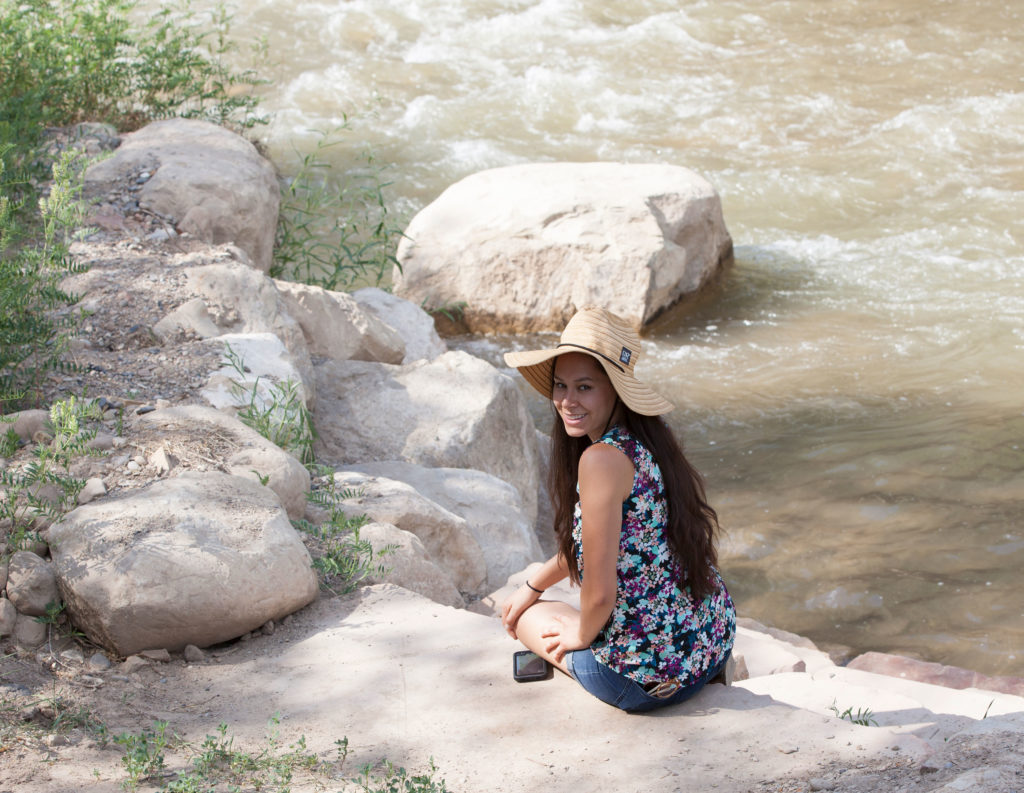
Helper council member Malarie Matsuda is helping oversee restoration of the Price River.
Matsuda’s ties to Carbon County go back five generations. She is “a proud coal-miner’s daughter.” Her dad still teaches mine safety at USU Eastern. “We just can’t rely on it anymore,” she says.
As mines closed, businesses shuttered. But slowly, intentionally, a change has taken hold. Restoration of 2.5 miles of the Price River that flows through the center of town is underway and most storefronts downtown have been purchased with plans for renovation. But signs of Helper’s reinvention stem back 20 years or more to when artists attracted to the abandoned buildings moved in.
They saw the beauty in this place,” Matsuda says. “The economy was so bad for so long, it created this opportunity for these really awesome things to happen.”
After graduating from USU Eastern in 2006, Matsuda moved out of the county, and later the state. But she and her husband, also a Carbon County native, kept tabs on the region from afar. We kept our eye on news from home, she says. “Suicide rates were going way up, opioid overdoses were going way up, we just felt called to come back. I think that’s one of the biggest struggles in the county is the brain-drain. People leave and don’t come back.”
They moved to Helper in 2014 and Matsuda joined the revitalization’s steering committee. Helper was awarded a grant from the American Institute of Architects to create a sustainable community redevelopment plan, an exercise involving robust public meetings. The process gave people a way to speak up and work together. Findings showed a preference for increasing tourism spending to boost retail and downtown development.
“Suicide rates were going way up, opioid overdoses were going way up, we just felt called to come back. I think that’s one of the biggest struggles in the county is the brain-drain. People leave and don’t come back.”
“We are the gateway to Arches, to Canyonlands, to Nine Mile Canyon, to the San Rafael Swell,” Matsuda says. “A lot of people are traveling right through here on their way. Let’s capture some of those dollars. For a long time we have been a pit stop, but we are trying to be a destination spot on our own.”
Helper hosts monthly art walks, seasonal arts and music festivals, and sporting events. However, the revitalization is not without challenges. Some people worry about becoming Park City, Matsuda says. “We are never going to be Park City. Helper is Helper.”
She believes inclusion will be key to the revitalization’s success. There are a lot of people in rural communities with good ideas, she says. “What’s critical is being invited into the process, into the political arena so that things can be done. Matsuda points to Helper’s mayor who coached her on seeing projects to fruition. “We just need a little guidance and support. It’s little steps, little actions, and all of a sudden this project is complete.”
Inclusion validates the process and gives people a sense of ownership of changes—down to the type of trees planted on Main Street. But inclusion is also part of Helper’s past. At the turn of the century, 27 languages were spoken here, Matsuda says. “We are really proud of our heritage here. People from Helper are very proud of their town.”
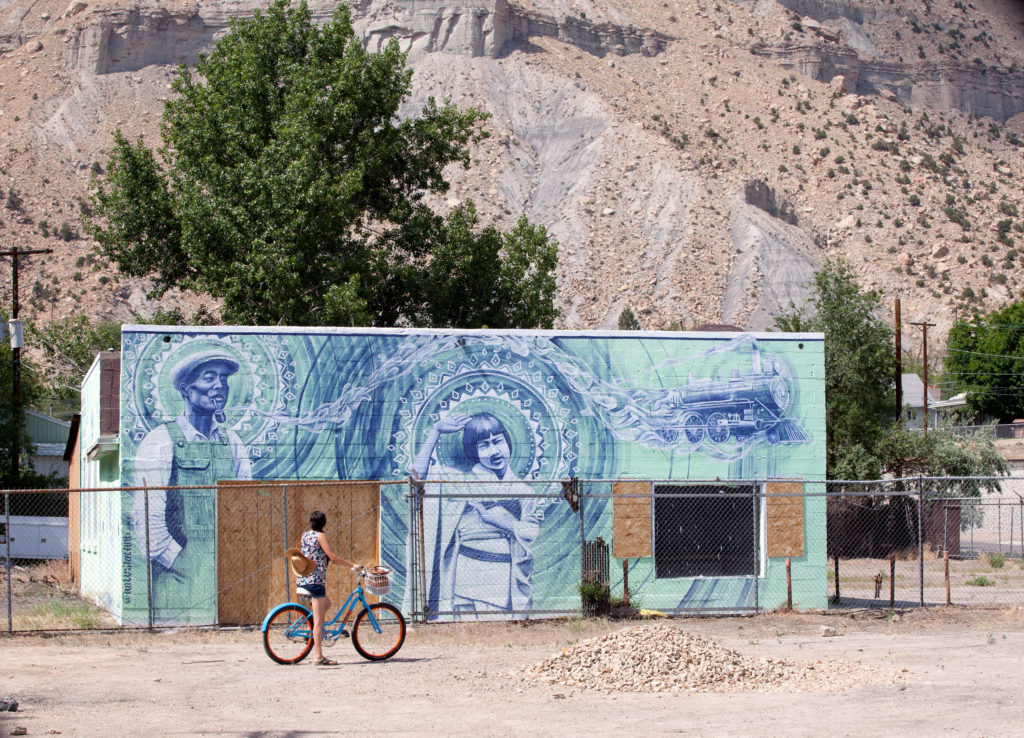
During a bicycle tour of Helper, Matsuda stops in front of a mural where her husband’s family history is on display.
And that hometown pride is helping rebuild it, rock by rock. When the town replaced its water lines, leftover boulders unearthed during construction were put to use. The revitalization committee asked volunteers to help build a stone labyrinth by the river. Nearly 30 people showed up—some who didn’t even know what they were building, Matsuda says.
There is no blueprint to follow and Matsuda isn’t certain she can pinpoint what has made the difference in Helper. She believes the camaraderie between local businesses and community members doesn’t hurt. “It’s ‘we,’” she says. “We talk like ‘we.’”
See the potential
Despite the heat—90 degrees and climbing—Matsuda borrows bicycles from Clear Creek Adventures, an outdoor recreation outfitter, and leads a tour of downtown. As she pedals her straw sunhat bobs in the breeze. She parks in front of Helper Hub, a new co-work space Cindy and Tom Lund opened with hopes of capitalizing on the growing freelance economy.
“We were going to have it as a perk for people at the RV park, especially people from Silicon Slopes,” Cindy says. “It’s amazing how many people drive through here with campers and toys who are going to Moab and [Lake] Powell. We have a lot to offer. The goal is to keep the charm of the town and don’t turn into Moab or Park City, but take the good things we can learn from them.”
The Lunds discovered Helper like most people—on a road trip. “I saw the sign for the arts festival. And because I am a railroad buff I had known about Helper,” she says. They couple exited and fell in love with the town. It’s a common story.
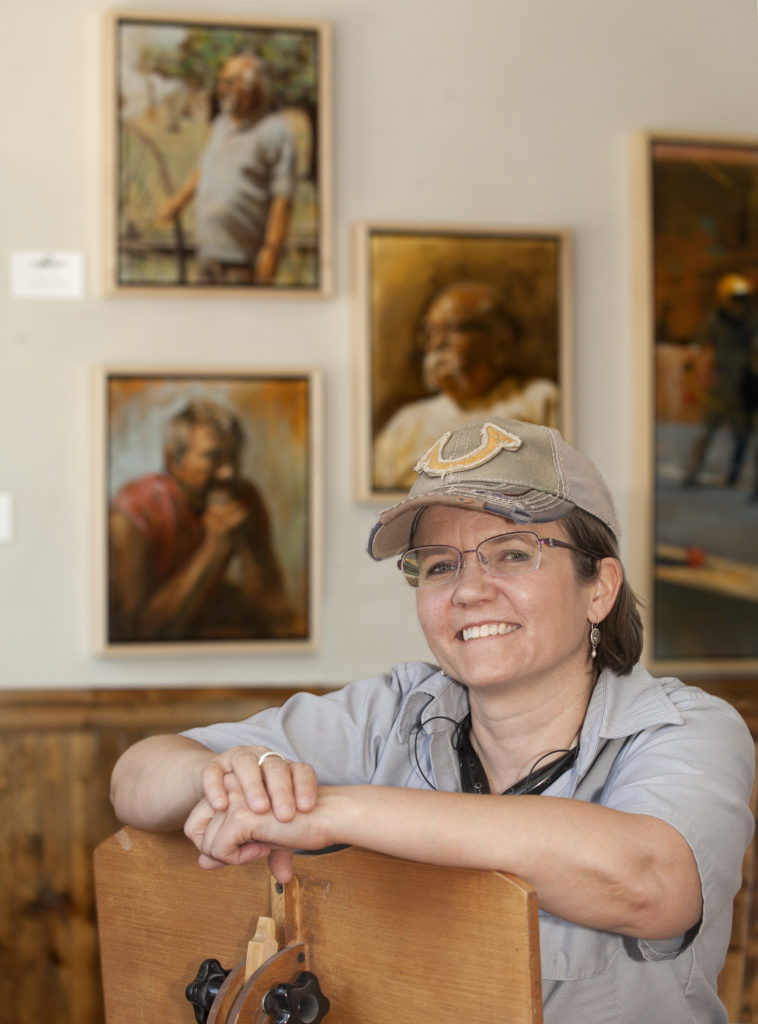
Painter Kate Kilpatrick Miller fell in love with Helper and the ability to make an impact there.
“We saw so much potential—like other people,” Tom says. “I’m an entrepreneur. I started thinking ‘what does the town need that is economically viable?”
They asked questions, did some market research, and settled on opening the Castle Gate RV Park and Campground next spring. It was a concept that evolved from not having a place to stay whenever they came down for the annual Helper Arts, Music, and Film Festival. They bought an alfalfa field with sewer, electrical, and water hookups. The town is wired with fiber cable. “All the elements were there,” he says.
Across the street at the Balance Rock Café, Matsuda meets with Kate Kilpatrick Miller, a painter who originally came to Helper for an art workshop. A year later she quit her job doing litigation support, paid off her debts, and moved to Helper to pursue art full-time. That was in 2012. And Kilpatrick Miller is still just as smitten with the town.
“A draw for me was I could be a part of the community and feeling that I was making a difference,” she says.
Kilpatrick Miller is involved with a local entrepreneurial accelerator group which meets weekly to help each other get past “the proverbial wall that’s in your way,” and connect each other to resources. The concept continues a thread emerging from an ongoing art project “The Faces of Helper” where she interviews residents and paints their portrait. With 45 interviews recorded, “the trend is people didn’t care if you were from Slovenia, China, or Poland, we took care of each other,” Kilpatrick Miller says.
As lunch arrives, Matsuda reflects on her own connection to the region.
“I think it’s normal when you grow up to want to get out as fast as you can,” she says. “If we want our young people to come back, we have to have a comm-unity where people want to live.”
She looks out the window. Freshly installed sidewalk plaques read “Welcome friends” in 27 languages. The new saplings planted by volunteers sway slightly.
“We built that,” she says.



